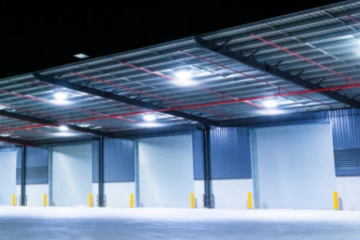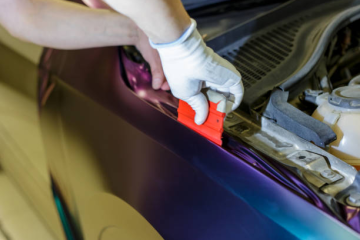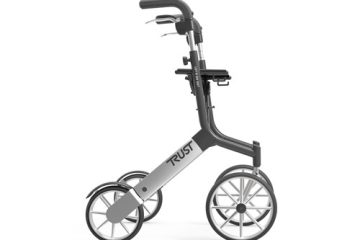Cycle rickshaws have come a long way from being just a means of transport to being a sign of green city transport. In the context of cities seeking environmentally friendly ways of addressing transport demands, the evolution of cycle rickshaws into adult tricycles is a perfect fusion of tradition and technology. This has been prompted not only by the need to transport people faster but also by the need to transport people in an environmentally friendly way that will suit the growing population of city dwellers. The contemporary cycle rickshaw preserves the reminiscence of the past while incorporating the features that are relevant to the present day comfort and efficiency, which makes it more and more popular among cities that aim to decrease the negative impact on the environment and enhance the quality of life in urban areas.
Historical Background
Cycle rickshaws were first used in the early part of the twentieth century and gained popularity in different regions of Asia. These vehicles were first developed as a replacement to the hand-pulled rickshaws as a more humane means for the pullers as well as the passengers. They gradually integrated themselves into the culture of these regions and transformed from mere necessities to a source of income for many urban households. With the globalization of the world, the appearance of cycle rickshaws also started to incorporate local and international art and culture, where each rickshaw became a symbol of the region it represented, with the art, culture and craftsmanship of the region being depicted on the rickshaw. This evolution shows the versatility of the cycle rickshaw from a mere means of transport to a symbol of culture and tradition as well as the present day city transport.
These analyses of the cycle rickshaw’s past and present reveal not only its development but also its potential to represent the cities’ historical and continuing story. From these discussions, it is clear that cycle rickshaws, especially those that have been modernized for use, are very important in the attempt to link the past to the present while at the same time providing a glimpse into how traditional means of transport can be adapted to fit the current world without compromising the cultural aspect of the transport means.
Transformation to Custom Tricycles
Due to the advancement in technology and growing awareness of the environment, cycle rickshaws have evolved into custom tricycles for adults. This new generation of rickshaws incorporates the feel of the old rickshaws and the new features of modern engineering. These are tricycles that are designed to fit the specific needs of the clients and they come with features like electric motors, comfortable seats, and even solar panels, which make them more than just transport vehicles for passengers.
This transformation is especially important in the contemporary context of urban environments that are characterized by the importance of efficiency, sustainability, and individualization. These needs are met by custom tricycles for adults as they provide a convenient means of transport that is environmentally friendly hence reducing the use of fossil fuels and pollution in urban areas. In addition, they offer a realistic solution to the mobility problems in congested urban areas, especially when it comes to moving through the small streets and crowded bazaars without causing traffic jams.
Cycle Rickshaws
Cycle rickshaws, especially custom tricycles for adults, are very useful in sustainable urban development. They are environmentally friendly since they do not emit carbon monoxide and are beneficial to use since they involve the use of energy through physical activity. The use of cycle rickshaws in the transport system of cities can go a long way in decreasing the negative effects on the environment and at the same time encouraging people to lead healthier lives.
Furthermore, cycle rickshaws improve the accessibility of urban areas. They can traverse through places that are restricted to large vehicles and provide basic necessities to people in such regions. The incorporation of cycle rickshaws into public transport networks will enhance the connectivity and accessibility of transport to all the citizens hence enhancing the quality of life in the cities.
Economic Opportunities and Empowerment
The change of cycle rickshaws into custom tricycles for adults has created new economic prospects. These vehicles are useful for people to earn their living, especially in areas where the price of conventional automobiles is beyond the reach of many. Custom tricycles enable business opportunities in transport, delivery services, and even tourism where the operators can take people on a round of their cities.
In addition, these tricycles enable people to be economically productive since they are given the means to be self-employed, thus creating a sense of self-sufficiency. This empowerment is important especially in the emerging economies where employment opportunities may be limited. Since cycle rickshaws provide an opportunity for small-scale business, they play a crucial role in the development of the economy and the community.
Cycle Rickshaws
However, the use of cycle rickshaws in the contemporary urban environment has some challenges such as; legal frameworks, physical structures, and social acceptance. To overcome these challenges, it is necessary that urban planners, policymakers, and other community stakeholders work towards providing favorable operating conditions for cycle rickshaws.
In the future, cycle rickshaws can be seen as custom tricycles for adults in mobility plans of cities and towns. If there is more development and proper policies are put in place, these vehicles can continue to be a viable solution for the transportation needs of the people in cities today and in the future.
Therefore, cycle rickshaws have evolved from their traditional form to a modern invention that can effectively solve the problems of the contemporary city. They not only help in the conservation of culture but also in the protection of the environment and the enhancement of the economy, making them an important tool in the search for better quality and more equitable urban environments. When well designed and integrated, and with constant improvement, these vehicles can improve the flow of people in cities, decrease the negative effects on the environment, and add a cultural value to the cities’ aesthetics. Promoting the application of such environmentally friendly transport systems is vital for future city development, which is in line with the global objectives of creating environmentally friendly and efficient cities.



